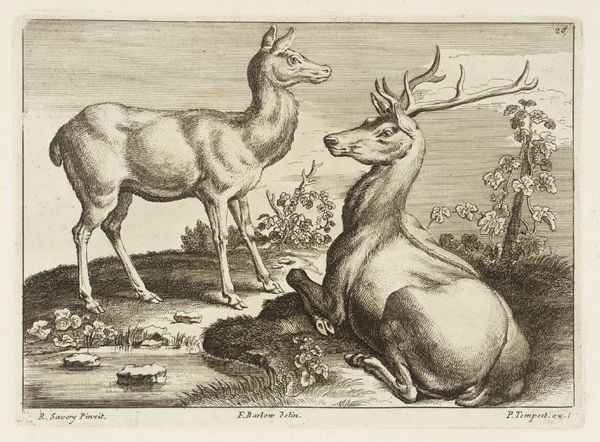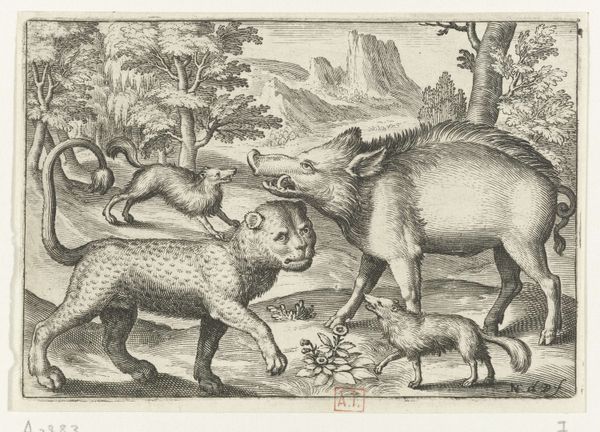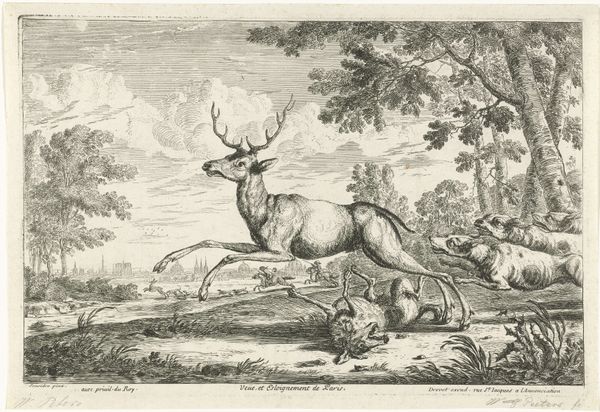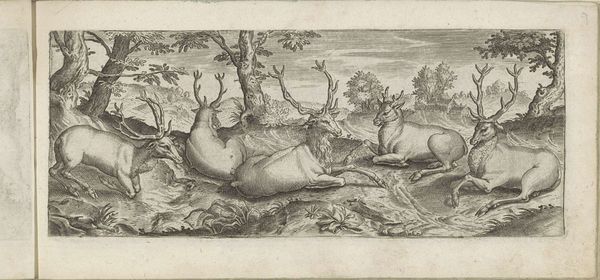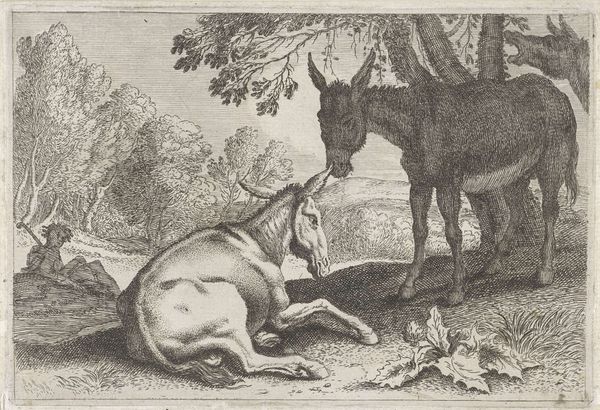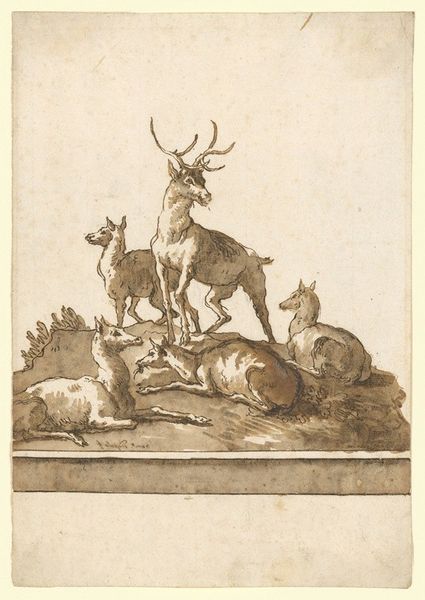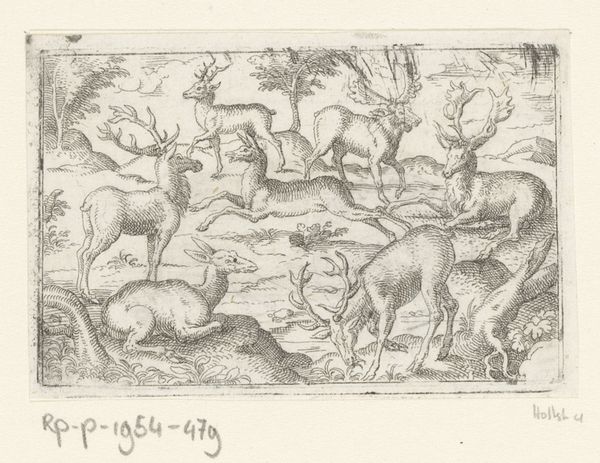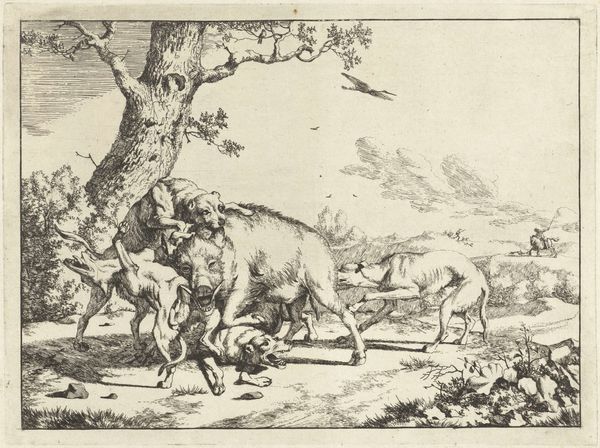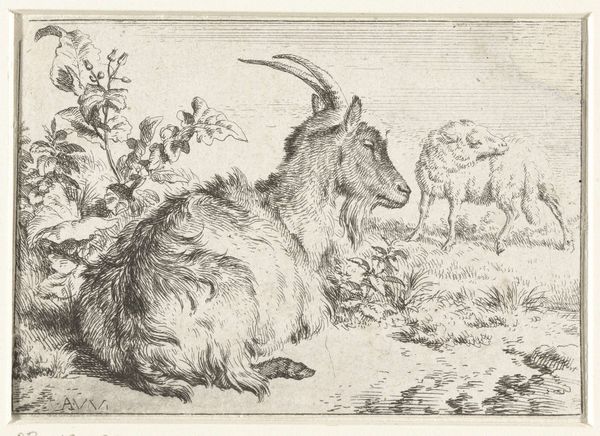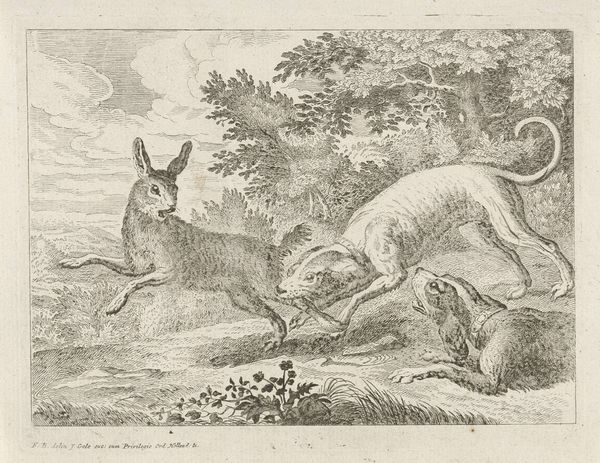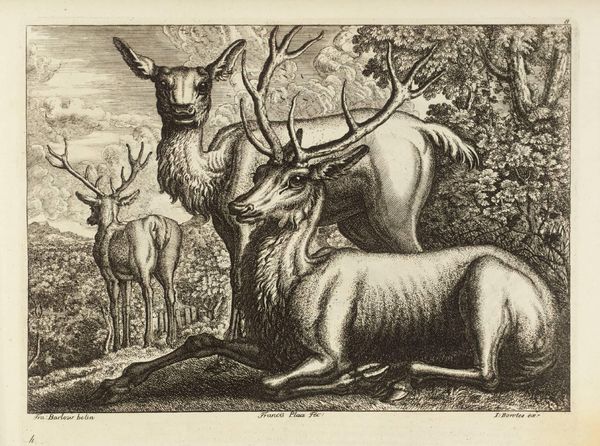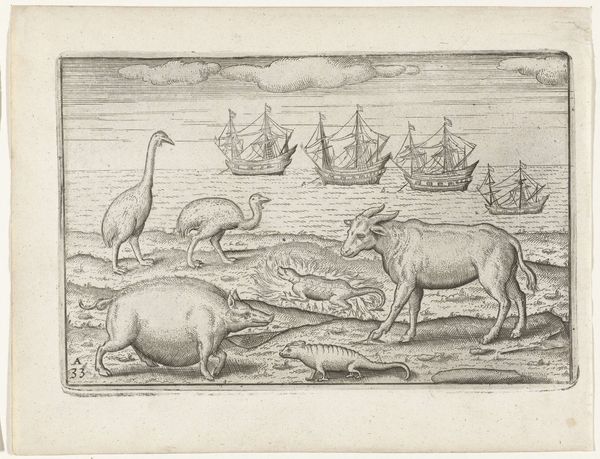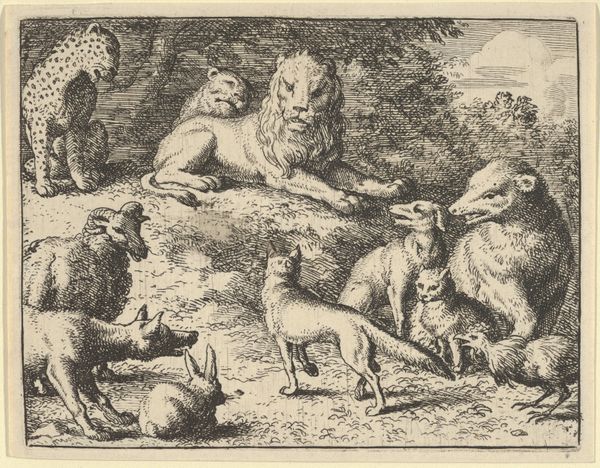
etching
#
ink drawing
#
baroque
#
pen sketch
#
etching
#
landscape
#
genre-painting
Dimensions: height 135 mm, width 181 mm
Copyright: Rijks Museum: Open Domain
Editor: This etching, "Jacht op een hert," or "Hunt for a Deer," was created sometime between 1655 and 1718 by Jan (I) Griffier. The scene depicts a stag being pursued by hounds. It feels very dynamic, like a captured moment. What social commentaries or historical observations can we glean from this artwork? Curator: This print offers a lens into the complex relationship between humans, animals, and the landscape during that period. Hunting, then and now, wasn't merely a sport; it was tied to class, land ownership, and power dynamics. How do you think Griffier's depiction of the hunt reflects these power structures? Editor: I suppose the hunter, usually an unseen but central figure in these scenarios, is exhibiting dominion, with the stag representing the subjugated natural world. The act seems less about sustenance and more about a demonstration of control. Curator: Precisely. And consider the stag itself: it is a symbol frequently associated with virility, nature, and even a certain wild nobility. By depicting its pursuit and inevitable capture, what message do you think Griffier might be conveying about the relationship between civilization and the untamed wilderness, and the gendered associations within? Editor: Perhaps it shows an assertion of human authority over these idealized, masculine attributes of the natural world. I see the hounds actively participate in it too. It's a multi-faceted narrative of power. Curator: Indeed, it reflects broader socio-political anxieties of the time – anxieties about controlling both the natural world and social order. We also might consider the ethics of the hunt, or, who has the right to dominate nature in such a dramatic form. How does examining works like this help us confront current environmental issues and ethical debates around our treatment of animals? Editor: That's something I hadn't considered before. Viewing art as a means to examine our past and current relationships with the natural world adds a lot of layers of complexity. Thank you for sharing your perspective! Curator: My pleasure! Looking at art through a social and historical lens helps us recognize the enduring echoes of the past in our present.
Comments
No comments
Be the first to comment and join the conversation on the ultimate creative platform.
